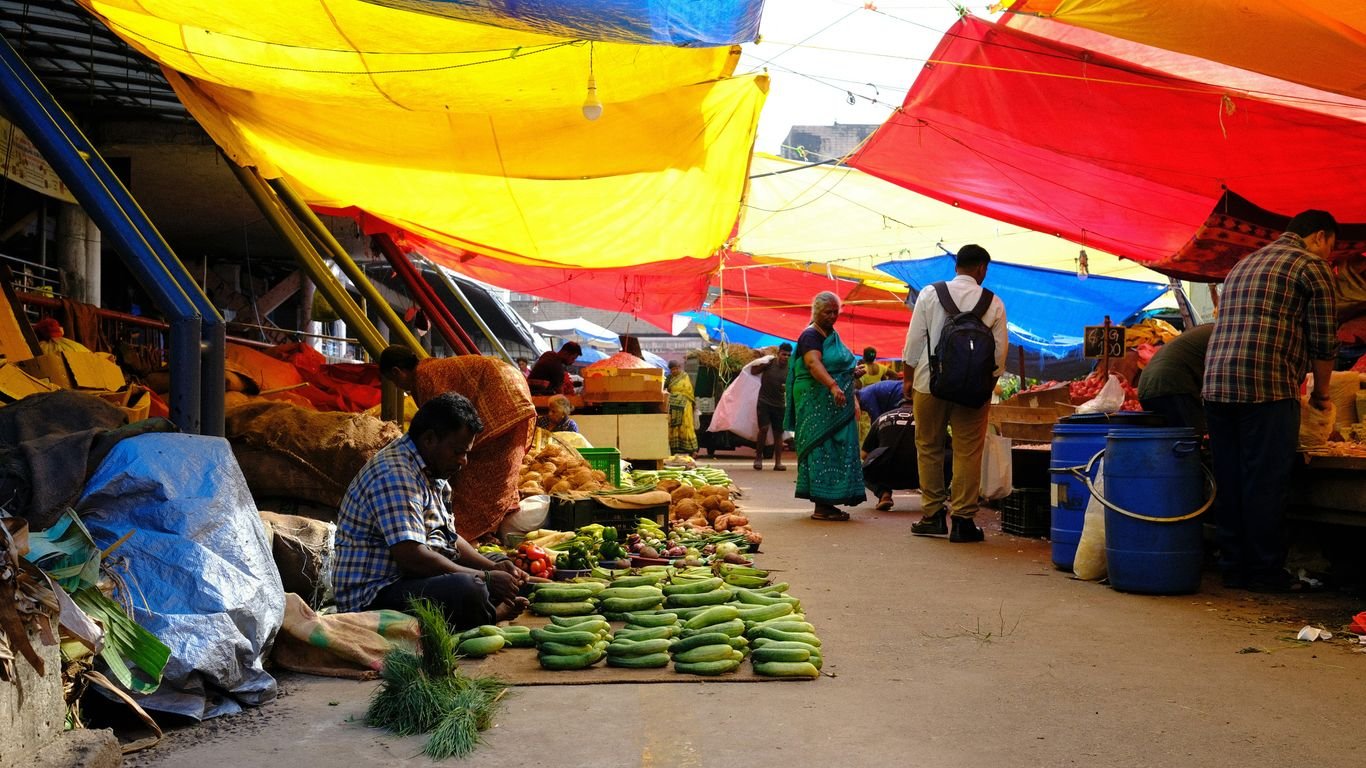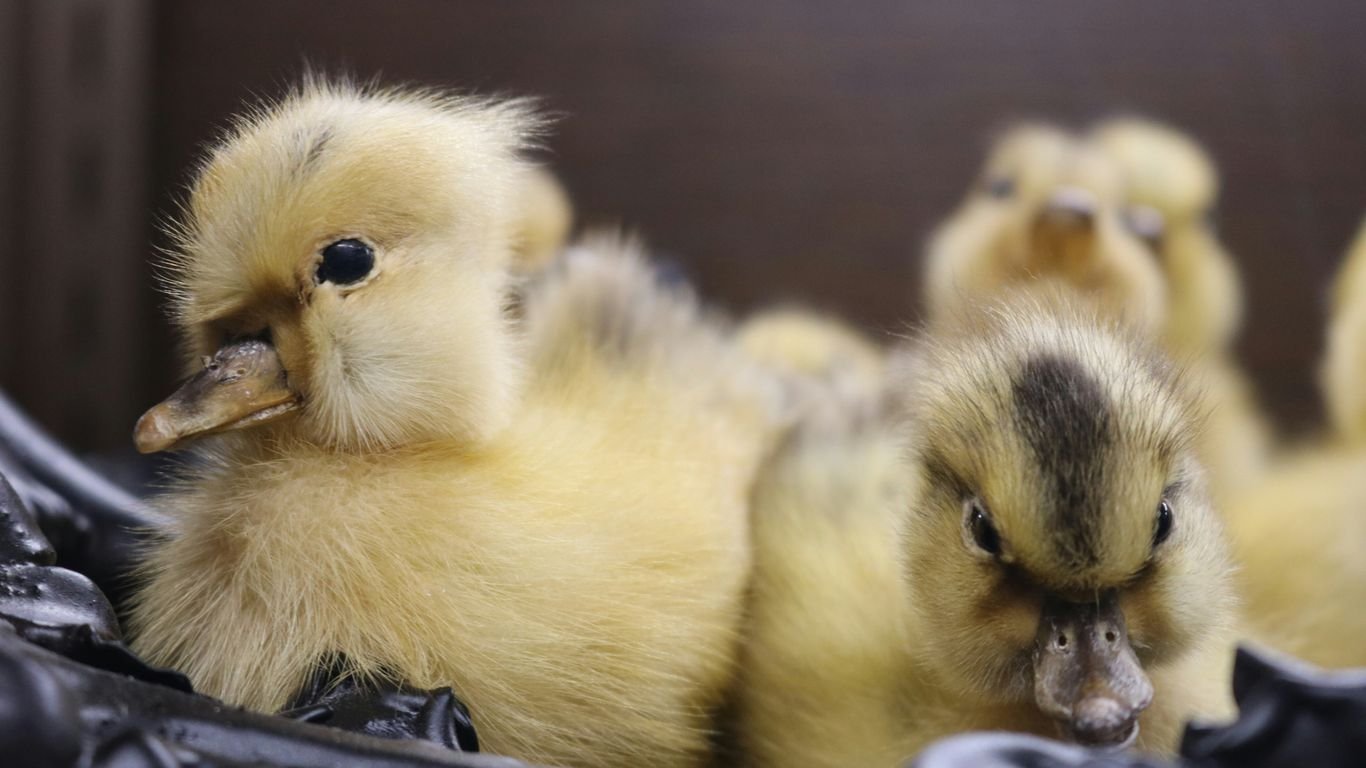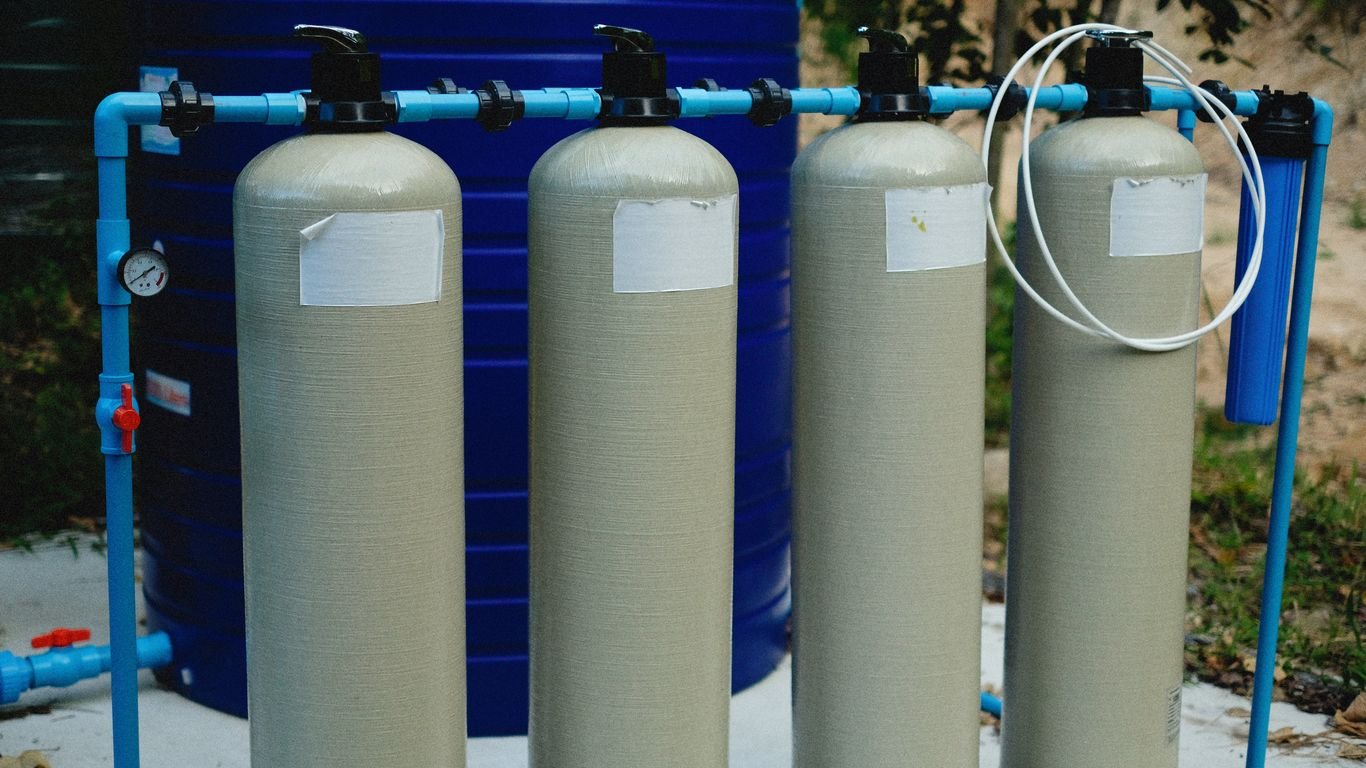Farm Swaps 101: How to Trade Goods and Build Community

We’ve all been there, right? Staring at a garden overflowing with zucchini or a pantry stocked with more jam than we could ever eat. Instead of letting it go to waste, what if we could trade it? That’s where the idea of a farm swap comes in. It’s a way for us to share our abundance, get new things we need, and connect with others in our community. Think of it as a friendly exchange, a way to build something good together without spending a dime. This farm swap guide will walk you through how we can make it happen.
Key Takeaways
- Farm swapping is basically trading goods, like extra produce or homemade items, with others instead of buying them.
- These swaps help us reduce waste, get a wider variety of food and goods, and save money.
- We can find or start farm swaps online through social media or dedicated websites, or by organizing local meetups.
- Building trust is important, so starting with smaller trades or meeting in public places can be a good idea.
- Farm swaps are a fantastic way to strengthen community ties, promote sustainable living, and share the bounty of our hard work.
Understanding the Basics of Farm Swapping

So, you’re curious about farm swapping? We get it. It might sound a little old-fashioned, but trading goods, especially from our gardens and farms, is a really smart way to get what you need and connect with people around you. It’s all about sharing the abundance we create.
What Exactly Is A Farm Swap?
At its heart, a farm swap is a gathering where people bring items they have in surplus – think extra tomatoes from your garden, a batch of homemade jam, or even some fresh eggs – and trade them with others for things they need or want. No money changes hands; it’s all about direct exchange. It’s like a potluck, but instead of food, everyone brings goods to share. We’ve seen everything from bundles of herbs and jars of honey to handmade soaps and extra seedlings being swapped. It’s a fantastic way to declutter your pantry or shed while stocking up on different goodies.
Why Trade Instead Of Buy?
Why bother trading when you can just buy things? Well, for starters, it often saves us money. If you have way too many zucchini and your neighbor has too many cucumbers, you can both end up with a better variety of veggies without spending a dime. It also helps us reduce waste. That extra produce that might have gone bad can find a good home. Plus, trading connects us directly with the people who grew or made the items. You get to know where your food comes from and who to thank for it. It builds a sense of community that you just don’t get from a supermarket.
The History Of Bartering Goods
Bartering, or trading goods without money, is as old as civilization itself. Long before coins or credit cards, people exchanged what they had for what they needed. Imagine a farmer trading grain for a blacksmith’s tools, or a weaver swapping cloth for pottery. This system worked for thousands of years because it’s a natural way for people to meet each other’s needs. While money became the dominant way to trade, the idea of bartering never really went away. It’s making a big comeback now, especially with food, because it feels more personal and sustainable. It’s a return to a more direct way of sharing resources, and honestly, it just feels good to participate in.
Here’s a quick look at how bartering compares to using money:
| Feature | Bartering | Using Money |
|---|---|---|
| Mechanism | Direct exchange of goods/services | Exchange using a common medium of value (cash) |
| Community | Builds direct relationships and trust | Can be impersonal, transactional |
| Waste | Reduces surplus and potential waste | Can contribute to overproduction and waste |
| Accessibility | Requires finding someone with matching needs | Widely accepted, easy to use |
| Value | Negotiated between parties | Standardized and publicly agreed upon |
Getting Your Farm Swap Off The Ground
So, you’re ready to start your own farm swap? That’s fantastic! It might seem a little daunting at first, but we’re here to break it down. Think of it like planting a new seed – with a little planning and care, it can grow into something really wonderful for your community.
Planning Your First Swap Meet
Getting the ball rolling for your very first swap meet is all about laying a good foundation. We found that picking a date and time that works for most people is key. Weekends are usually a good bet, maybe a Saturday morning when folks aren’t rushing off to work or other commitments. Also, think about the season. If you’re in a place with a long growing season, you might be able to have swaps more often. If not, maybe a few times during the peak harvest months is best. We also learned that having a central, easy-to-find location makes a big difference. A local park, a community garden, or even a friendly neighbor’s large yard can work wonders.
Setting The Rules For Your Swap
This is where we get to decide how our swap will work. It’s important to have some basic guidelines so everyone knows what to expect. We don’t want cash changing hands, that’s the whole point, right? So, rule number one is usually: no money involved. Beyond that, we’ve seen different approaches. Some swaps are strictly for homegrown produce, meaning no store-bought items. Others are a bit more flexible and might allow things like homemade jams, baked goods, or even crafts, as long as they’re made by the swapper. It’s also good to think about whether you want to focus only on food, or if you’d like to include things like seeds, plants, or even garden tools. Clearly communicating these rules beforehand helps avoid any confusion or disappointment.
Here are a few common rules we’ve seen work well:
- Homegrown Only: All items must be grown or made by the person swapping them.
- No Cash Transactions: The exchange is strictly based on trading goods.
- Quality Matters: Items should be fresh, in good condition, and safe to consume or use.
- Be Specific: When you bring something to swap, be ready to describe it (e.g., "organic heirloom tomatoes," "homemade strawberry jam").
Deciding What To Swap
What can you actually swap? Pretty much anything from your garden or homestead! We’ve seen everything from the usual suspects like tomatoes, zucchini, and berries to more unique items. Don’t underestimate the value of things you might think are common. A big bag of extra basil can be a lifesaver for someone who only needs a little bit. And think beyond just fresh produce.
Here’s a list of ideas to get you thinking:
- Fresh Fruits and Vegetables: Whatever is in season and abundant in your garden.
- Herbs: Fresh or dried, these are always a welcome addition.
- Eggs: If you have backyard chickens, fresh eggs are a hot commodity.
- Honey: Local honey is a fantastic item to trade.
- Preserves and Pickles: Jams, jellies, pickles, and sauces made from your harvest.
- Baked Goods: If your swap rules allow, homemade bread or cookies can be a treat.
- Seeds and Seedlings: Especially great for spring and fall swaps.
- Flowers and Plants: Cut flowers or extra houseplants can brighten someone’s day.
When you’re planning your first swap, it’s a good idea to gauge the interest of the people who show up. Ask them what they’d like to swap and what they’re hoping to get. This feedback is gold for planning future swaps and making sure everyone feels included and gets something they want.
Finding Your Community Of Swappers

So, you’ve got a surplus of zucchini and maybe a few too many jars of homemade jam. That’s awesome! But where do you find other folks who are just as excited about trading their garden goodies for yours? It’s all about connecting with your local growers and enthusiasts. Building a strong community is the heart of any successful farm swap.
Connecting Online For Trades
In today’s world, the internet is a fantastic place to start. Think of it as a digital farmers market where you can scout out potential trading partners. Many areas have dedicated Facebook groups or websites specifically for food trading. You might see posts like "Tons of Leeks!" or "Garlic Galore!" – these are your signals. It’s a simple, yet effective, way for people to connect and arrange trades right in their neighborhood. Some platforms even let you trade excess CSA shares, which is a neat way to diversify your weekly haul.
Local Meetups And Gatherings
While online connections are great, there’s something special about meeting people face-to-face. Look for local crop swap events happening in parks or community centers. These gatherings are often advertised through local gardening clubs, community boards, or even those online groups we just talked about. It’s a chance to see what others are growing and to chat about gardening tips. You might even find that some swaps feature guest speakers, like beekeepers or composting experts, adding an educational element to the fun.
Building Trust With Fellow Growers
Trust is key when you’re swapping goods, especially food. Start small. Maybe you trade some extra tomatoes for your neighbor’s basil. As you get to know people at local swaps or through online forums, you’ll start to recognize who is reliable and who shares your passion for quality produce. Showing up consistently, being honest about what you’re offering, and respecting the items others bring are all part of building that trust. Supporting family farms by following them on social media can also give you a better sense of their practices and dedication. Follow local farms.
When you participate in swaps, you’re not just exchanging goods; you’re building relationships. These connections can lead to shared knowledge, mutual support, and a stronger sense of community. It’s about more than just the harvest; it’s about the people you share it with.
Making The Most Of Your Harvest
So, you’ve got a garden overflowing with more tomatoes than you know what to do with, or maybe your apple tree decided to go wild this year. What do we do with all this extra goodness? We swap it, of course! This is where we really get to see the benefits of our hard work pay off, not just for our own kitchens, but for the whole community.
Trading Surplus Produce
This is probably the most common reason people start swapping. We all have those bumper crops. Instead of letting them go to waste, we can trade them for things we might not be growing ourselves. Imagine swapping your extra zucchini for your neighbor’s amazing peaches, or trading a basket of beans for some fresh eggs. It’s a fantastic way to add variety to our meals without spending a dime. We just need to make sure what we’re trading is fresh and in good condition. A quick check for any soft spots or wilting goes a long way.
Swapping Preserved Goods Safely
Beyond fresh veggies and fruits, we can also swap things we’ve preserved. Think jams, jellies, pickles, dried herbs, or even frozen berries. This is a great way to enjoy the harvest long after the growing season is over. However, when it comes to preserved goods, we need to be extra careful about safety. Proper canning and preserving techniques are super important. If you’re trading jams, make sure the jars are sealed correctly and there’s no sign of mold. For pickles, ensure they’ve been properly brined. It’s a bit of a ‘trader beware’ situation, so we should always inspect what we receive and only swap with people we trust or who follow good practices. Maybe we can even organize a workshop on safe preserving methods together!
Beyond The Garden Bounty
Swapping isn’t just about the food we grow. We can get creative! Do you have a knack for baking? Maybe you can trade some of your sourdough starter for a jar of honey from a local beekeeper. Or perhaps you’ve got extra seeds you saved from last year that someone else could use. We could even swap crafts or skills. I’ve seen people trade homemade soap for garden tools, or offer to help weed someone’s garden in exchange for a share of their harvest. It really shows how much we can offer each other when we look beyond just the produce.
The Benefits Of A Thriving Swap

When we get together to swap goods, we’re doing more than just trading tomatoes for zucchini. We’re actually building something pretty special in our neighborhoods. It’s about connecting with the folks who live right down the street, sharing what we have, and getting a taste of what they’re growing.
Strengthening Local Connections
Think about it: how often do we really chat with our neighbors? A farm swap gives us a reason to. We meet people, share gardening tips, and learn about what’s growing in different parts of our community. This kind of interaction builds real bonds and makes our towns feel more like home. It’s a chance to see familiar faces and meet new ones, all centered around a shared interest in good food and community spirit. It’s a way to get to know the people who are part of your local food system, not just anonymous suppliers.
Boosting Food Variety And Access
We all have those plants that just go wild in our gardens, right? Maybe you end up with way more basil than you can ever use, or your apple tree produces a mountain of fruit. Swapping means we can share that abundance. You can trade your extra basil for your neighbor’s extra cucumbers, or swap some of your apples for their fresh eggs. This way, we all get to try new things and enjoy a wider range of produce without having to buy it all. It’s a fantastic way to diversify our diets and make sure everyone has access to fresh, healthy food, even if their own garden isn’t producing it.
Here’s a peek at what kind of variety we often see:
- Seasonal Produce: From summer berries to fall squashes, we share what’s ripe.
- Herbs and Spices: Fresh mint, rosemary, and more can find new kitchens.
- Preserved Goods: Jams, pickles, and sauces made with love.
- Other Garden Goodies: Flowers, seeds, and even homemade crafts.
Fostering Sustainable Practices
Swapping is inherently good for the planet. When we trade locally, we cut down on the need for long-distance transportation, which means less fuel burned and fewer emissions. Plus, it encourages us to use what we grow and not let food go to waste. It’s a practical way to reduce our environmental footprint and support a more sustainable way of living. It’s about making the most of what we have right here, right now.
Trading goods locally, like we do at farm swaps, is a practical way to reduce waste and support a circular economy. It keeps resources within our community and lessens our reliance on outside supply chains, which often have a larger environmental impact.
We’ve seen swaps grow from simple produce exchanges to events that include workshops on composting and seed saving. These gatherings are becoming hubs for learning and sharing knowledge about sustainable living. It’s inspiring to see how much we can achieve when we work together, sharing not just food, but also ideas and practices that benefit everyone and strengthen neighborly ties.
Tips For A Successful Farm Swap Guide
So, we’ve talked about the basics and how to get started, but how do we make sure our farm swaps are not just functional, but actually fun and keep people coming back? It’s all about creating a good vibe and making the exchange smooth for everyone involved. We want these events to be more than just trading tomatoes for zucchini; we want them to be community builders.
Organizing A Festive Trading Fair
Think of your swap meet as a mini-festival for growers. Music can really liven things up – maybe a local musician plays acoustic sets, or we create a shared playlist. Having some simple decorations, like colorful banners or even just some nice tablecloths for the tables, makes it feel more special than just a bunch of people standing around with bags. We could also set up a small area for kids to do a craft, like decorating seed packets, so families feel welcome. And don’t forget snacks! A potluck table where people can bring a dish to share, or even just some lemonade, goes a long way.
Encouraging Diverse Participation
We want everyone to feel like they belong, no matter how big or small their garden is. It’s easy for swaps to become dominated by people with huge harvests, but we need to make sure those with just a few herbs or a handful of eggs feel just as valued. Maybe we can have a "beginner’s corner" where new gardeners can ask questions and get advice. We should also actively reach out to different neighborhoods or community groups to let them know about the swap. Flyers at the library, community centers, or even local cafes can help spread the word. The more different kinds of people and produce we have, the richer the experience for everyone.
Keeping The Swap Flowing Smoothly
Clear guidelines are key. Before the swap, we should share a simple list of what’s generally okay to trade. This might include fresh produce, seeds, eggs, honey, or even homemade jams and pickles. For preserved goods, it’s a good idea to suggest clear labeling with ingredients and the date it was made. We don’t want any surprises! Having a designated area for check-in can help manage the flow, especially if we want to keep a rough count of attendees. A simple sign-in sheet works well. We can also have a few volunteers on hand to help direct people, answer questions, and make sure things stay friendly and organized. If we have a lot of one item, like an overabundance of lemons one week, we can encourage people to get creative – maybe suggest recipes or offer them as "bonus" items for other trades.
Here’s a quick rundown of what makes a swap work:
- Clear Communication: Share rules and expectations beforehand.
- Welcoming Atmosphere: Make everyone feel comfortable and valued.
- Organization: Have a simple system for check-in and guidance.
- Flexibility: Be ready to adapt if certain items are super popular or scarce.
Sometimes, the simplest approach is the best. We don’t need fancy systems. Just a friendly face, a clear idea of what we’re trading, and a willingness to share is often enough to build something really special in our communities.
Wrapping It Up
So, there you have it. Farm swaps, whether they’re for extra veggies from your garden or handmade crafts, are a fantastic way to get more out of what you have and connect with the people around you. We’ve seen how these exchanges can bring neighbors together, turn neglected spaces into community hubs, and even help us all live a little more sustainably. It’s not just about trading goods; it’s about building something stronger, together. Give it a try – you might be surprised at what you gain, and who you meet along the way.
Frequently Asked Questions
What exactly is a farm swap?
A farm swap is basically a get-together where we, as gardeners and growers, bring extra food we’ve grown or made from our own places. Instead of letting it go to waste, we trade it with each other. Think of it like a potluck, but for garden goodies and homemade treats!
Why would we trade instead of just buying things?
Trading is a fantastic way to save money and get a wider variety of fresh foods that we might not grow ourselves. It also helps us connect with our neighbors and build a stronger local community. Plus, it’s often more sustainable, reducing food miles and waste.
How do we make sure trades are fair?
Fairness is key! We usually decide beforehand what kinds of things we’ll be swapping and try to make sure everyone feels like they’re getting a good deal. It’s less about strict value and more about mutual benefit and community spirit. Sometimes we weigh produce, or just agree on rough equivalents.
Can we swap more than just fresh vegetables?
Absolutely! Many swaps welcome all sorts of homemade goods. We can trade things like jams, pickles, baked goods, eggs, honey, herbs, or even crafts. Just be sure to follow any guidelines about food safety for preserved items.
What if we don’t have much extra to trade?
That’s perfectly fine! You can still come and participate. Sometimes just bringing a small bunch of herbs or a few extra apples is enough to get you started. The goal is to share and connect, not to make huge trades. We welcome everyone, no matter how much they have to offer.
How do we find other people to swap with?
We can find swap buddies in a few ways! We can look for local groups online through social media or community websites. Organizing a small gathering with friends and neighbors is also a great start. Sometimes, word of mouth is all it takes to find a thriving swap group nearby.






